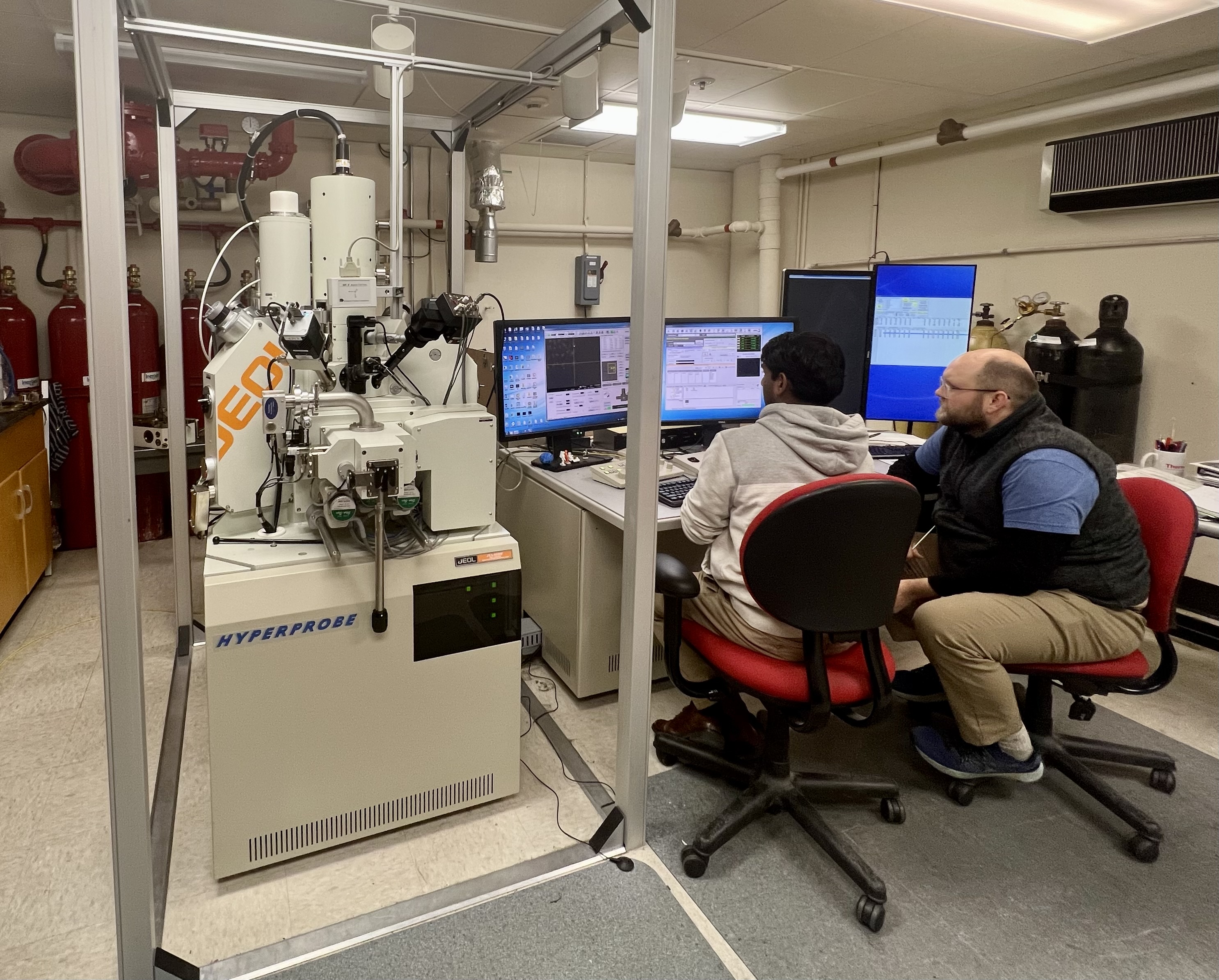NATIONAL MUSEUM OF NATURAL HISTORY
Meet the Scientist Venturing to Remote Canada in Search of the Earth’s Oldest Rocks
Smithsonian researcher Wriju Chowdhury is part of an expedition searching for 4-billion-year-old crystals that could uncover the secrets behind Earth’s early history
:focal(1334x838:1335x839)/https://tf-cmsv2-smithsonianmag-media.s3.amazonaws.com/filer_public/fe/0f/fe0f2519-1bf9-468f-bf71-38155c774120/acasta_gneiss-01.jpg)
How did Earth go from a fiery planet covered with oceans of magma to a lush biosphere that supports life? Understanding a process that took over 4 billion years to unfold has proven difficult but answers to these geologic mysteries may be hiding in the chemical makeup of tiny and tough crystals known as zircons.
Only a handful of these ancient minerals have ever been collected. As a result, scientists have never had enough material to conduct research that could unlock their planetary secrets. But this summer, an expedition to one of Earth’s oldest geologic formations could change everything.
For the past few weeks, a team of scientists led by Michael Ackerson, a research geologist at the National Museum of Natural History, has been traversing the remote Northwest Territories of Canada. Their destination is a rock formation known as the Acasta Gneiss, where they are hoping to collect a whole new assemblage of elusive, 4-billion-year-old zircons.
Any samples the team brings back from the field will be housed in the museum’s collections, where they will be available to researchers from around the world. The expedition will support the museum’s Our Unique Planet research initiative, which seeks to further our understanding of the origins of the continents, the oceans and life on Earth.
/https://tf-cmsv2-smithsonianmag-media.s3.amazonaws.com/filer_public/8b/12/8b12061a-983f-4ae0-b077-63c0f5f9894c/screen_shot_2024-07-10_at_100954_am.png)
What first got you interested in studying geology and early Earth processes?
I have always been drawn to the outdoors, and that has been my primary motivation in this field. But the first time I formally learned about geology was when I was applying to university right after high school. I heard that there was a course where you got to go out into the field and see the natural world. I applied and made it into the program.
Right from the beginning of my career, I got to travel to all these remote locations. I visited the foothills of the Himalayas. I explored the western part of India, which has the only desert in the country. I would never have gotten to see any of those places if I hadn’t become a geologist.
And that is how I feel about our upcoming expedition to Canada. I am getting to travel to a place way out in the wilderness, where few people will ever set foot. I get to explore the outdoors while also helping answer some of the big questions in science.
What are zircons, and what makes them important for research?
/https://tf-cmsv2-smithsonianmag-media.s3.amazonaws.com/filer_public/3b/97/3b97e6af-00d5-43d0-8945-2e282a46f478/nhb2012-00472_copy.jpg)
You can think of zircons as microscopic building blocks of Earth material. Elements come together to form crystals, and these crystals form rocks, which form continents, which form the planetary crust that we live on. A zircon is one of those tiny crystals that is created when certain elements combine at certain temperatures and pressures.
The reason we focus on zircons to understand early Earth geochemical processes is because they are hearty and resilient. Whereas almost all minerals from the early Earth have been destroyed or altered by eons of tectonic activity, some rare zircons have managed to survive relatively unscathed. Another factor that makes the crystals so important is the uranium and lead that they contain, which make them very easy for us to date. Uranium decays into lead at a constant rate, so we can tell how long it has been since the crystals formed.
As the only material that remains from the beginning of Earth’s history, zircons are excellent time capsules. They contain information about the environments in which they were created, preserving their origin stories for billions of years.
What are your main goals for your expedition to Canada this summer, and what questions are you hoping these zircons could answer?

My greatest hope is that we find something nobody else has found before. But I don't want to go into the field with any preconceived notions. While our goal is to stay flexible and really explore the landscape, there are a few things I would be very excited if we found.
If we discovered zircons that are over 4 billion years old, it would be a huge step forward for the geochemical community. It is almost hard to comprehend how rare these minerals are. Researchers who work with zircons like to say that diamonds are not actually rare at all, but early zircons are. If you gathered all the 4-billion-year-old zircons that have ever been collected on Earth, they would barely cover the bottom of a five-gallon bucket.
Zircons this old will help us build a tectonic history of the planet and begin to explain the long planetary cycles that have gotten us to where we are today. Hopefully, after this expedition we will be able to start answering some of those big questions about the origins of the continents, the oceans and life on Earth.
Old zircons have been found in other locations, so what makes Acasta Gneiss zircons unique?
/https://tf-cmsv2-smithsonianmag-media.s3.amazonaws.com/filer_public/59/5c/595ca4cc-6ba1-4878-9979-3d9af1d5ec90/rock_shard_next_to_a_red_circle_magnifying_part_of_the_rockpng_copy.jpg)
Earth is 4.56 billion years old. The oldest surviving crust material collected by scientists is a smattering of 4.37-billion-year-old zircons from Western Australia. But the problem with these zircons is that they are not found in the rocks and geological locations where they were formed. So, they have been orphaned from their parent material.
"Zircons are excellent time capsules. They contain information about the environments in which they were created, preserving their origin stories for billions of years." — Wriju Chowdhury, NMNH postdoctoral fellow
In the Acasta Gneiss location, the zircons have stayed with their parent rocks for 4 billion years. Having this context to go along with the crystals will allow us to tell a much more complete story of the early Earth and make stronger analyses than ever before.
Why is it valuable to understand early plate tectonics, and what can they tell us about the origins of life?
/https://tf-cmsv2-smithsonianmag-media.s3.amazonaws.com/filer_public/59/82/5982ef93-5a8b-466d-8424-2bac38f6ba0c/screen_shot_2024-07-10_at_101323_am_copy.jpg)
Whether you realize it or not, plate tectonics control all the cycles that keep us alive, like the water cycle, CO2 cycles and oxygen cycles. These are all dependent on the tectonic processes of our planet, as Earth’s continental plates move, fracture and collide with each other over eons.
The way tectonics operates today is not how it operated in the past. It is vastly different. And we want to know how we got to this point. We started as a planet completely covered by oceans of magma around 4.5 billion years ago. What geochemical steps gave rise to the current mode of tectonics that supports Earth’s biosphere and allows life to exist?
Currently, Earth is the only planet that has been discovered which has a biosphere or plate tectonics. So, the two are thought to be connected. But does the former depend on the latter?
We are trying to figure out if plate tectonics are necessary for the development of life. Understanding very early Earth processes could help us answer fundamental questions about how we came to be on this planet.
Related Stories
New Study on Zircons Finds Plate Tectonics Began 3.6 Billion Years Ago
Uncovering Earth’s Secrets One X-ray at a Time
NMNH in Review: How an Asteroid Sample Traveled From Outer Space to the Museum’s Mineral Hall
Meet the Smithsonian Scientist Venturing to Volcanoes to Understand the Origins of Earth’s Surface

